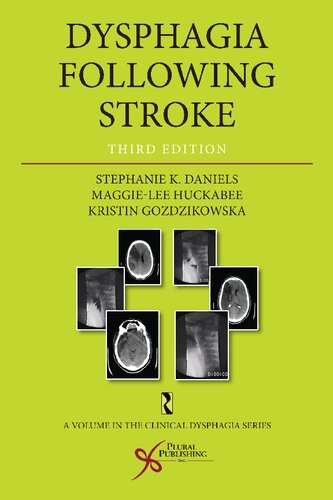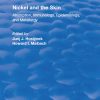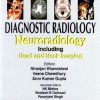Dysphagia Following Stroke 3rd Edition by Stephanie Daniels, Maggie Lee Huckabee, Kristin Gozdzikowska ISBN 9781635500318 1635500311
$50.00 Original price was: $50.00.$35.00Current price is: $35.00.
Dysphagia Following Stroke 3rd Edition by Stephanie Daniels, Maggie Lee Huckabee, Kristin Gozdzikowska – Ebook PDF Instant Download/Delivery: 9781635500318 ,1635500311
Full download Dysphagia Following Stroke 3rd Edition after payment

Product details:
ISBN 10: 1635500311
ISBN 13: 9781635500318
Author: Stephanie Daniels, Maggie Lee Huckabee, Kristin Gozdzikowska
Dysphagia Following Stroke, Third Edition is a practical and easy-to-use resource for clinicians treating swallowing disorders in the stroke population. The authors bridge the gap between academic and clinical practice with up-to-date research and clinical case examples throughout.
In addition to a thorough overview of dysphagia diagnosis and management, this text focuses heavily on evaluation and management of stroke. Key topics include neural underpinnings of normal and disordered swallowing, swallowing screening, the clinical swallowing examination including cough reflex testing, the expanding array of instrumental swallowing modalities, and the rehabilitation of swallowing including strength training, non-invasive brain stimulation, and skill training. While geared toward practicing clinicians, Dysphagia Following Stroke is also useful for students in professional training programs.
New to the Third Edition
- A third author, Kristin Gozdzikowska, bring a fresh perspective as a young clinician and researcher with particular expertise in high resolution manometry and various cutting-edge treatment techniques
- Updated chapters on assessment to include new and emerging instrumental technologies, including high resolution manometry, impedance, and ultrasound
- Updated chapters on management to include the newly described International Dysphagia Diet Standardization Initiative
- New and expanded framework for rehabilitation, with a shift from peripherally focused rehabilitation to neuromodulation of cortical swallowing control
- New and updated research and trends in clinical practice throughout
This thoroughly updated and enhanced edition of Dysphagia Following Stroke is sure to remain a valued resource for clinicians working with stroke patients in all settings.
Dysphagia Following Stroke 3rd Edition Table of contents:
1. Introduction to Dysphagia and Stroke
Overview of Stroke
Dysphagia in Stroke
Multidisciplinary Management of Dysphagia in Stroke
2. The Neural Control of Swallowing: From Central to Peripheral
Methods for Understanding Neural Control
Higher Nervous System Control
Brainstem Mechanisms
Peripheral Neuromuscular Mechanisms
3. Normal Swallowing Anatomy and Physiology
Defining Normal and Abnormal Swallowing
Phases of Swallowing
4. Swallowing Screening in Patients with Acute Stroke
Background of Screening Swallowing in Stroke
Components of a Good Screening Tool
Models for Screening Implementation
Implementation of a Nurse-Administered Swallowing Screening Tool
Available Swallowing Screening Tools
5. The Clinical Swallowing Examination: History, Patient Interview, Informal Cognitive and Communication Assessment
Introduction to the Clinical Swallowing Examination
Patient History
Patient and Family Interview
Informal Assessment of Cognition and Communication
6. The Clinical Swallowing Examination: The Evaluation of the Oral Mechanism
Structural Integrity
The Cranial Nerve Examination: Inferring Physiology
Extending the Cranial Nerve Examination: The Cough Reflex Test
Case Example
7. The Clinical Swallowing Examination: Assessment of Oral Intake
Executing the Assessment of Oral Intake
Interpreting the Assessment of Oral Intake
8. The Clinical Swallowing Examination: Predicting Dysphagia and Aspiration
The Clinical Swallowing Examination with a Focus on Clinical Features Predicting Dysphagia and Aspiration
The Mann Assessment of Swallowing Ability
9. Adjuncts to the Clinical Swallowing Examination
The Timed Water Swallowing Test
The Test of Masticating and Swallowing Solids
Assessment of Lingual Palatal Pressure with the Iowa Oral Pressure Instrument
Pulse Oximetry
Cervical Auscultation
10. The Instrumental Swallowing Examination: The Videofluoroscopic Swallowing Study
The Need for Diagnostic Specificity
The Videofluoroscopic Swallowing Study
11. The Instrumental Swallowing Examination: Evaluation of Swallowing Respiratory Coordination—An Auxiliary to the Videofluoroscopic Swallowing Study
Executing the Evaluation of Swallowing Respiratory Coordination
Interpreting the Evaluation of Swallowing Respiratory Coordination
12. The Instrumental Swallowing Examination: Videoendoscopic Evaluation of Swallowing
Executing the Videoendoscopic Evaluation of Swallowing
Interpreting the Videoendoscopic Evaluation of Swallowing
13. The Instrumental Swallowing Examination: Manometric Evaluation of Swallowing
Manometric Approaches
Low-Resolution Manometry
High-Resolution Manometry
Impedance
What Can Manometry Offer to Clinical Practice?
14. The Instrumental Swallowing Examination: Ultrasound Evaluation of Swallowing
The Need for Diagnostic Specificity
Ultrasound Imaging: The Method
Muscle Morphometry
Swallowing Kinematics
Emerging Applications
15. Professional Responsibilities: Dysphagia Diagnosis in Stroke
Case Example
16. Diagnosis of Dysphagia in Stroke
Oral Phase
Pharyngeal Phase
Oral and Pharyngeal Dysmotility in Stroke
Summary
17. Diet Considerations: To Feed or Not to Feed
An Overview of Options for Feeding the Patient with Dysphagia
Non-Oral, Enteral Feeding Options
Decision Making for Non-Oral Nutrition
Free Water
Oral Hygiene
Summary
18. Compensatory Management of Oropharyngeal Dysphagia
Postural Changes
Sensory Enhancement
Volitional Control of Oral Transfer
Breath-Holding Techniques
Bolus Modification
19. Principles of Rehabilitation for Oropharyngeal Dysphagia
Diagnostic Precision for Rehabilitative Effectiveness
Principles of Neural Plasticity
The Take-Home Point
20. Rehabilitation of the Peripheral Sensorimotor Swallowing System
Peripheral Muscle Strengthening
Peripheral Sensory Stimulation
21. Central Rehabilitation for Oropharyngeal Dysphagia: Extrinsic Modulation
Central Stimulation Techniques
Translating rTMS and tDCS into Clinical Dysphagia Rehabilitation
The Need for Intelligent Enthusiasm
22. Central Rehabilitation for Oropharyngeal Dysphagia: Behavioral Adaptation
Skill-Based Training Paradigms: Dysphagia as a Motor Planning Disorder
Biofeedback
Take-Home Points
23. Medical and Surgical Management
Medical Management
Surgical Intervention
24. Lagniappe
Management Effectiveness for Patients with Stroke
Reassessment
Last Thoughts
References
Index
People also search for Dysphagia Following Stroke 3rd Edition:
dysphagia following stroke icd 10
icd 10 code for dysphagia following stroke
dysphagia following stroke third edition
the natural history of dysphagia following a stroke
Tags:
Stephanie Daniels,Maggie Lee Huckabee,Kristin Gozdzikowska,Dysphagia Following Stroke



